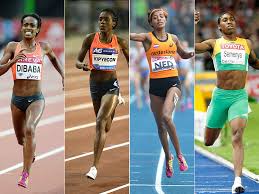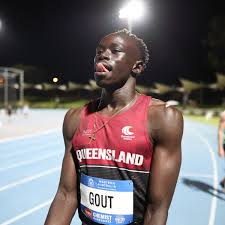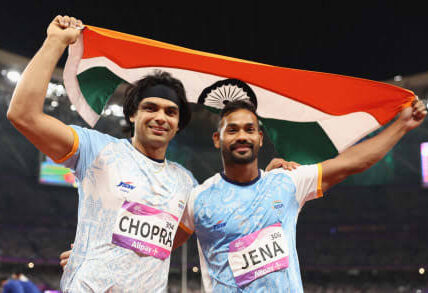Skip to content
“Race of the Season: Domestic 1500m Boasts Deepest Field in Years”
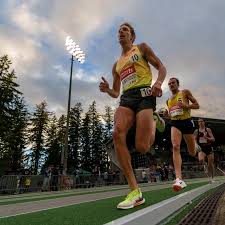
In a rare showcase of middle‑distance strength, the domestic 1500 m is delivering the most competitive field seen in years.
Top talents from across the country converged last weekend, producing a stacked lineup that promises fireworks in the buildup to national championships and Olympic qualifiers.
The Field That Has Everyone Talking
This season’s domestic circuit has assembled a remarkable roster: multiple sub‑3:34 men and sub‑4:00 women, all within striking distance of each other. Among the standouts:
Reynold Cheruiyot—the Kenyan‑born phenom now representing domestically—clocked back‑to‑back 3:31 performances on the Diamond League circuit in 2025, including personal bests at Rabat and national trials (Wikipedia).
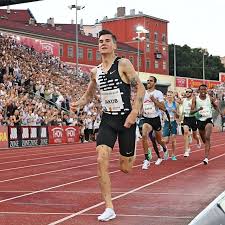
Young Australian sensation Cameron Myers, though racing internationally, set the Australian run-in‑Australia record of 3:33.30 in Melbourne and logged multiple elite marks in domestic competitions, giving depth to the men’s division (Wikipedia).
-
On the women’s side, Sarah Healy has lowered her own Irish indoor record over 1500 m to 4:01.62 in Birmingham, now ranking as one of Europe’s fastest indoor performers in early 2025 .
Long‑standing global stars like Gudaf Tsegay (3:54.86 indoors) and Faith Kipyegon (world record 3:49.11 in 2023) aren’t entered domestically, but the aspirational standards they set have raised ambitions at home (Athletics Africa).
Add in established national champions such as Olli Hoare, Olympic and Commonwealth medallist in the 1500 m (best ~3:30.12), and the stage is set (Wikipedia).
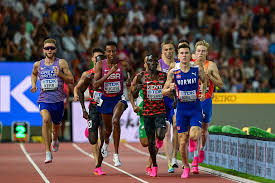
Why It Matters: Depth and Stakes Align
This isn’t your typical one or two stand‑alones and a handful of hopefuls.
The men’s race features three or four athletes capable of mid‑3:31s to low‑3:32s, paced for fast time or tactical flair.
The women’s division similarly pits multiple runners with early‑season 4:01–4:03 bids, nearly matching international podium pace.
With domestic Olympic qualifying standards hanging at sub‑3:35 for men and sub‑4:00 for women, this crowd offers real medal potential—but also invites risk.
A misstep or mistimed tactical surge could hand victory to the underdog.
National selectors and track fans alike are keenly watching—not just for times, but for how athletes fare under pressure.
Many of the field have already racked up Diamond League or international podiums; now they’re bringing that pressure home.
Inside the Meet: Highlights
Last meet at Lakeside Stadium captured the trend:
Cameron Myers muscled through a challenging final lap to overtake Adam Spencer in front of a packed crowd, delivering a season’s best that edgily mirrored global form (The Guardian).
In the women’s 1500 m, Claudia Hollingsworth, only 19, sprinted through the field to beat Linden Hall and Abbey Caldwell in a race she described as “crazy” due to frequent position changes—a hallmark of intensity in deep fields (The Guardian).
This meet followed a sell‑out sprint festival featuring top sprinters, demonstrating a public appetite for high‑class middle‑distance drama.
Athlete Voices: Mixed Confidence and Pressure
Cameron Myers described his win: “It was tough conditions, but I was able to muscle it out as best I could,” suggesting grit as essential to success in this lineup (News.com.au, The Guardian).
Hollingsworth admitted: “Lots of pushing, lots of change of position…not quite the race plan I predicted, but I got the job done in the end”—highlighting how deep races force adaptability (The Guardian).
These candid reflections underscore how racing such a field is as much tactical chess as a speed test.
What’s Next: National Titles and Olympic Trials
The national championships and Olympic trials approaching this summer will likely serve as the battleground for this domestic elite. Expect:
Men’s drop zones in the low‑3:31 range to make semifinal and final podiums a test of nerves as much as fitness.
-
Women needing sub‑4:00 credentials to feel secure in selection—so expect hesitation or risk in pacing strategies.
-
A domino effect: fast heats spurred by expecting fast finals, or cautious early rounds awaiting tactical sprints.
Why This Makes for a Landmark Season
In recent memory, domestic meets rarely assembled more than one or two world‑class 1500 m runners.
This year’s alignment of emerging stars, veterans rediscovering form, and global benchmarks has created a scene arguably stronger than some continental finals.
Statistically, this may rank among the deepest domestic 1500 m seasons—with more than half a dozen athletes consistently producing elite marks.
It’s a rare window where national depth begins to approach international elite timeline breadth.
Final Lap
For middle‑distance fans, athletics officials, and Olympic hopefuls alike, this season’s domestic 1500 m offers something rare: a real test of collective caliber.
With several sub‑3:32 men jostling alongside women chasing sub‑4:00 standards, medals, and dreams, every race matters.
Expect history in the making—not just in times, but in how athletes navigate pressure and pace against peers equally hungry for the spotlight.



